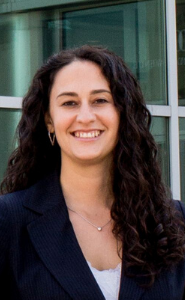2024 Year-End Tax Planning

As we approach the end of the year it is helpful to reflect on steps that can be taken to reduce taxes that otherwise would be due. This blog addresses possible end-of-year planning strategies to boost charitable giving as well as the possibility to reduce income tax and capital gains tax, as well as potential estate tax exposure for your clients. But it is important to keep the possible impact of the upcoming election in mind as the outcome is likely to result in changes to the tax law that could impact investments and giving strategies this year and next.
Key Year-End Charitable Giving Strategies:
Donations to charity can reduce your overall income tax bill if you itemize your deductions and can avoid the application of capital gains taxes if you are disposing of assets such as stock that have appreciated in value. Gifts of retirement assets also can provide a current tax benefit as well as remove the gifted assets your estate. Here are some tips to consider:
Use appreciated assets to make a charitable gift in 2025.
As in previous years, gifts of appreciated assets (stock) remain a best practice, and with the rise in stock market values over the last 12 to 18 months, your clients may have experienced significant growth in their investment portfolio. Such gifts can provide a deduction for the full current value of the asset, but also avoid the capital gains tax that would apply if the assets were sold rather than gifted them. Conversely, assets with built-in losses generally should be sold (generating a tax loss) with the resulting cash proceeds donated, if desired. *Note, up to $3,000 of capital losses may be used to offset ordinary income, and the deduction for gifts of cash can be used up to 60% of AGI.
Consider donating to a Donor Advised Fund (DAF) this year for maximum flexibility.
If you are considering making a significant donation to charity over time or just want the ability to plan your charitable grants over a period of years, onsider adding funds to an existing Donor Advised Fund (DAF) or opening a new DAF. It can be especially beneficial to donate appreciated property, because by doing so capital gains taxation with respect to the contributed assets is eliminated. The Associated operates an easy and flexible donor advised fund program and we would be happy to assist your clients.
- INCENTIVE! For the first 50 DAFs established with The Associated by December 31, 2024, The Associated will give a grant to the new DAF after the donor advisors recommend grants to The Associated, its agencies and programs, Baltimore synagogues and day schools and not-for-profits whose mission is to support Israel. For new funds with initial balances of $5,000 to $9,999, the matching grant will be $500; for new funds with initial balances of $10,000 or more, the matching grant will be $1,000.
“Bunching” Charitable Gifts Can Magnify Tax Benefits:
Combining these two strategies can enhance your tax savings by “bunching” two or more years contributions this year. The larger contribution can create a bigger tax benefit this year and then provide a fund from which distributions can be made over several years to satisfy your anticipated charitable giving. This approach is especially helpful for clients who might not otherwise be eligible to itemize their deductions. Only taxpayers who itemize their deductions get a tax benefit from a charitable gift. By bunching into a Donor Advised Fund this year, one can increase the total amount of deduction to a level where it may be more advantageous to itemize than to rely on a standard deduction.
Utilize IRA Charitable Rollovers.
If your client is over age 70 ½, the IRA charitable rollover is an attractive option that permits you to transfer up to $105,000 this year (the amount is indexed for inflation) from an individual retirement account directly to a charity, free of any income tax; for spouses, they can each take advantage of the $105,000 transfer. In addition, such rollovers help satisfy the IRA minimum distribution requirement if your client has reached the age where such distributions must be taken into income (generally when you reach age 73). The rollover also removes these retirement assets from any potential estate tax exposure.
- Expansion of IRA Charitable Rollover Provision. Congress recently expanded the IRA charitable rollover provision to allow for a one-time, $53,000 distribution to charities through Charitable Gift Annuities, Charitable Remainder Unitrusts, and Charitable Remainder Annuity Trusts.
Consider accelerating non-charitable family giving:
The current unified estate and gift tax credit of $13.61 million currently is scheduled to automatically reduce to around $7 million beginning with transfers made in 2026. Accordingly, taxpayers who intend to make significant family gifts (either during their lifetime or in the form of bequests) may want to consider accelerating some or all of those gifts early, as their resources permit. Utilizing a Charitable Lead Trust may be the right tool for those clients who would are charitably inclined and would also like to make significant family gifts.
As with any significant tax and charitable planning, you should always carefully consider potential changes in the context of your client’s complete financial profile. The Associated’s professionals are ready to work with you and your clients on ways to help maximize the financial and charitable benefits of any charitable planning strategies.

For more information, contact Jackie Yahr at 410-369-9248 or jyahr@associated.org.
This is for informational purposes only and should not be construed as legal, tax or financial advice. When considering gift planning strategies, you should always consult with your own legal and tax advisors.
Subscribe to our newsletter
The Associated is a home for everyone in the Baltimore Jewish community. We offer several email lists to help people find a community, engage with their peers and support Jewish journeys around the world.
Join Our Mailing ListAdd Impact to Your Inbox
Sign up for our newsletter
Subscribe to our newsletter
The Associated is a home for everyone in the Baltimore Jewish community. We offer several email lists to help people find a community, engage with their peers and support Jewish journeys around the world.
Join Our Mailing List









 Please Wait while we loading your video.
Please Wait while we loading your video.